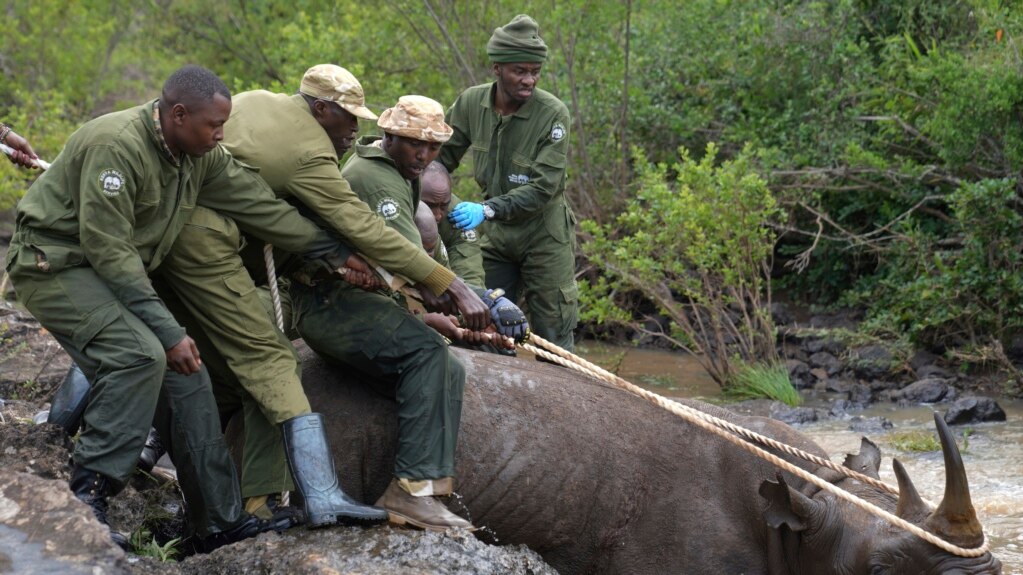Kenya began its biggest rhino relocation project earlier this month. Workers began the difficult work of moving 21 of the endangered animals to a new home. They each weigh around one metric ton.
A previous attempt at moving rhinos in the East African nation was a disaster in 2018. All 11 of the animals died.
The latest project experienced early troubles. A rhino targeted for moving was successfully hit with a tranquilizer shot from a helicopter but ended up in a creek. Veterinarians and park rangers held the rhino's head above water with a rope to save it while a tranquilizer reversal drug took effect. It was then released.
Wildlife officials have said that the difficult project will take time, likely weeks.
The black rhinos are a mix of males and females. They are being moved from three conservation parks to the private Loisaba Conservancy in central Kenya, the Kenya Wildlife Service said. They are being moved because there are too many in the three parks. They need more space to roam and, hopefully, to breed.
Rhinos generally spend time alone and are at their happiest in large territories.
Kenya has had some success in saving its black rhino population. In the mid-1980s the rhino population fell below 300 because of poaching, raising fears that the animals might go extinct in a country famous for its wildlife.
Kenya now has nearly 1,000 black rhinos, says the wildlife service. That is the third biggest black rhino population in the world behind South Africa and Namibia.
There are just 6,487 wild rhinos left in the world, says rhino conservation group Save The Rhino. All live in Africa.
Kenyan officials say they have relocated more than 150 rhinos in the last 10 years or so.
Six years ago, Kenya moved 11 rhinos from the capital, Nairobi, to another sanctuary in the south of the country. All died soon after arriving at the sanctuary. Ten of them died from stress, lack of water and starvation, which was worsened by salt poisoning as they struggled with saltier water in their new home, investigations found. The other rhino was attacked by a lion.
Some of the 21 rhinos in the latest relocation are from Nairobi National Park. They will make a 300-kilometer trip in the back of a truck to Loisaba. Others will come from parks closer to Loisaba.
Loisaba was once home to a healthy black rhino population before they were wiped out in that area 50 years ago, said Loisaba Conservancy CEO Tom Silvester.
Kenyan wildlife officials say the country is aiming to grow its black rhino population to about 2,000. They believe 2,000 would be the best number considering the space available for them in national and private parks.
I’m Dan Novak.

